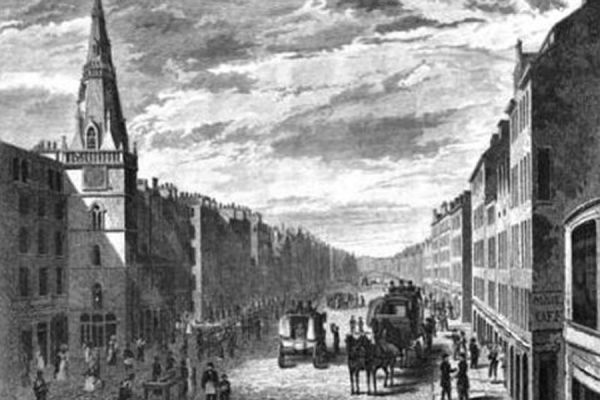
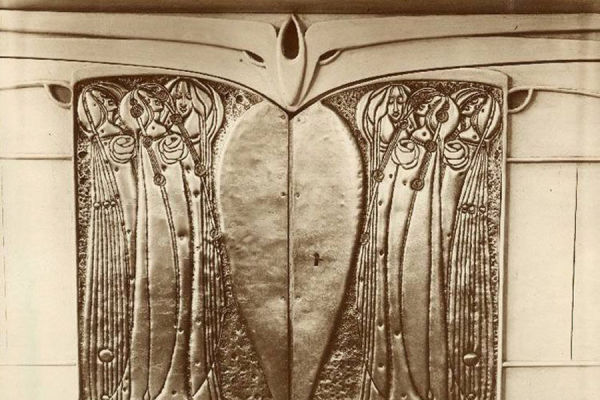
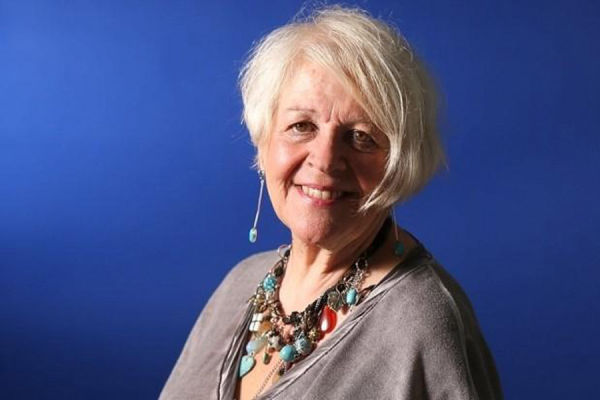
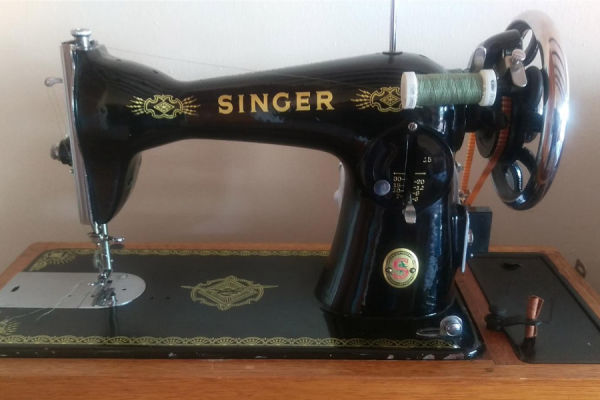




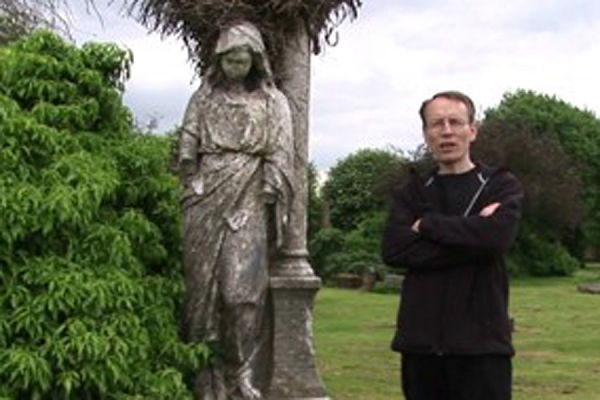
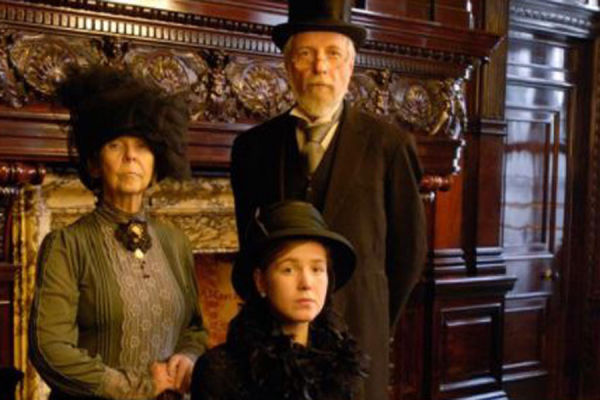
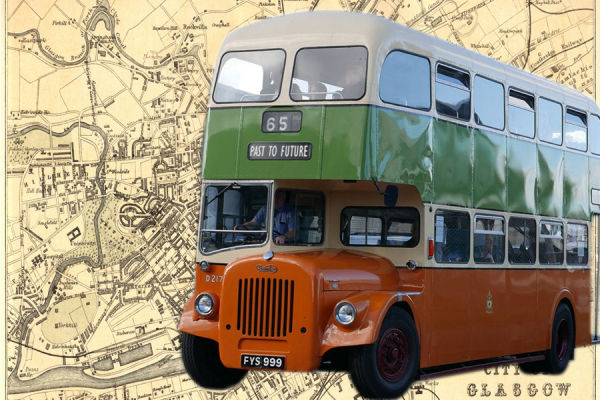
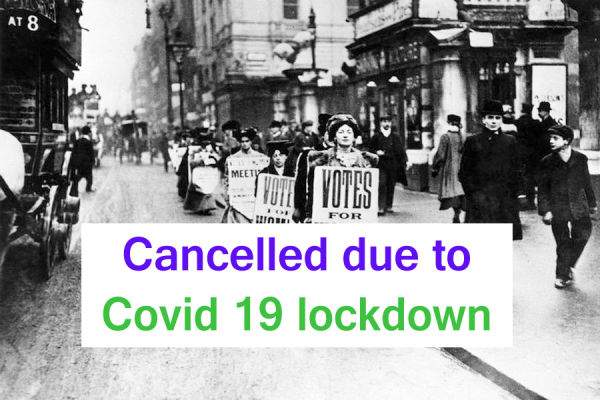
held at Adelaide's, 209 Bath Street, Glasgow
Attendees: 84
Chair: President, Mr Brian D Henderson
Mr Henderson welcomed members and visitors to the first meeting and enrolment night of the 2019-20 session. Following the Safety announcement and request that all mobile phones by switched off, he continued to the Apologies.
Apologies: Cameron Lowe, Joan Lowe, Alastair McFarlane, Jane Collie, Glen Collie, Janette Knox, Isabel Haddow, Arti Trezise.
Minutes: Mr Henderson then asked if there were any amendments to the Minutes of the last ordinary meeting held on 11th April. No one spoke, but Mr Henderson himself had an amendment – a typographical error in the vote of thanks which should have read as “insight”, not “incite” . The Minutes should have read “….insight into such a wonderful institution….” Acceptance of the Minutes was then proposed by Margaret Thom, seconded by Ruaraidh Clark.
President’s Report: Mr Henderson recently visited Bob Dunlop - Past President, former Honorary President, Recording
Secretary and Librarian – who does not now enjoyed good health.. He also reported on Maureen Smith, a former Club Treasurer, who has been unwell. She is now recovering and Mr Henderson asked the meeting to join with him in hoping she will be back among us soon.
Moving on to his “Living History” theme, Mr Henderson reported that there had not been a club meeting in September 1919. His
“Living History” experience centred instead on three Glasgow newspapers no longer in existence – the Bulletin (sister paper to the Glasgow Herald and Evening Times), which existed from 1915 till 1960; the Evening News (incorporating the “Evening Star” and “Glasgow News”) which published from 1877 until 1957: and thirdly the Evening Citizen, published from 1864 until 1974.
Mr Henderson then called on Mrs Joyce McNae, Club Secretary, to give her report.
Secretary’s Report: Club Secretary, Joyce McNae began by welcoming members to a new session of the club. As there had been amendments to the Constitution she advised that copies of the revised version were available from Colin McCormick at the enrolment desk where copies of a new leaflet to publicise the club could also be picked up.
Joyce went on to summarise this winter’s programme before recapping on this summer’s events. Starting with a very successful evening at the Botanic Gardens for the JAS Wilson Memorial Walk. This should have been followed by the Tappit Hen bowling tournament but this had to be cancelled due to the weather.
She then reviewed events in Glasgow before handing back to the President.
..
Speaker: Peter Mortimer is a past Club President, serving in 2000 to 2001, when .he wrote the foreword to the handbook produced to mark that special occasion. Mr Mortimer has also written a number of books on Glasgow and is a very busy man.
Peter began by saying it was a pleasure to be back at the club where he had spent many hours enjoying the history of this wonderful city of ours. The title of his talk was “A Potted History of Glasgow” which was the title of an essay he wrote for the centenary handbook.
He started by speaking about the discovery of Bronze Age remains discovered in the Mount Vernon area in 1928. Iron Age relics have been found in the Queens Park and in that area Medieval pottery and evidence of Roman presence. There is the Roman Baths in Bearsden and the Antonine Wall nearby.
Mr Mortimer then spoke of the arrival of Christianity with Kentigern and the establishment of Glasgow Cathedral and the small communities in that area, followed by the creation of the university, based originally at the cathedral.
Moving on to the “Tobacco Lords”, he explained that while large amounts were imported from the Americas to Glasgow most of it was then exported to Europe at great profit to those who traded in it.
Some time later James Watt, who was an instrument maker at Glasgow University, invented the condenser for the steam engine and heralded the arrival of mass production and the industrial revolution. Cotton mills sprang up throughout the city.
Iron and steel production saw further development in Glasgow, particularly with the shipyards and ancillary companies. Apart from shipbuilding, in the east end of the city there were companies like Arrols (most famous for the Forth Rail Bridge) and Beardmores, eventually a huge conglomerate. Mr Mortimer also made mention of Templetons, carpetmakers, and the railway engine works in Springburn who exported to all corners of the world.
Glasgow’s population peaked at 1.1 million in the 1930s To feed such numbers all forms of food manufacturers and retailers grew in the city, including Liptons.
To meet the population growth there was a need for housing which saw the creationt of the Glasgow tenement. Getting so many people around the city was another challenge. This led to the building of the Subway and to the development of our famous tram network.
Mr Mortimer also described the growth in department stores before moving on to the school-building programme and provision of public wash-houses and baths. Another municipal provision was public libraries, including the magnificent Mitchell Library.
For entertainment Glasgewians loved their cinemas. At its peak there were something like 120 cinemas in the city, from the plush Odeon in Renfield Street to some of the more humble local halls.
After the Second World War came decanting from the inner city to the peripheral housing schemes - Drumchapel, Pollock, Easterhouse and Castlemilk. Good houses, but without the amenities.
Glasgow in the 50s and 60s was in decline, but then women in Govan began to demand better houses. This led to the refurbishment of tenements in the 70s and 80s. Then came the Garden Festival in 1988, an amazing success, followed two years later by the Glasgow, City of Culture. This change brought about a new attitude in the city and a realisation that we have some great architecture in the city and a desire to keep our heritage and take advantage of it.
Mr Mortimer concluded by describing the 2014 Commonwealth Games as an event he is most proud of, which showed Glasgow in a very good light.
Q. What was the first major material to be recognised as coming from Glasgow?
A. It would have to be Tobacco; then Cotton products. But what we are really best known for are Ships.
Vote of thanks: This was given by Past President Stuart Little.
Quiz: Director Gaynor MacKinnon announced the photograph tonight as the façade of the old Rottenrow Maternity Hospital. She asked Peter to make the draw. There was no name on the slip, but the winner was eventually found.
AOCB: No points were raised at which point, President Brian announced he would be leading a walk in Kinning Park on Saturday 21 September.
He then gave the mic to Peter who listed three walks he would be leading that same weekend.
Closure of meeting: There being no further business, President Henderson closed the meeting by thanking everyone for their attendance.
Next General Meeting: Thursday, 10 October, 7pm for 7.30. Speaker: Theo Burrell “Gifts from Glasgow”
Directors Meeting: Thursday 3 October, 6pm. 26 Queen’s Drive.
Crawford Cassidy,
Acting Recording Secretary
held at Adelaide's, 209 Bath Street, Glasgow
Attendees: 65
Chair: President, Mr Brian D Henderson
Mr Henderson welcomed members and visitors to the October meeting .
He then announced the sudden death of Past-President and former Membership Secretary Sam Gordon. He and longtime friend Stuart Little, our immediate Past President, invariably occupied the front row at meetings. A plain speaker, you always knew where you stood with Sam. His funeral took place yesterday in Knightswood.
Following the Safety announcement and request for all mobiles to be switched off, Brian continued to the Apologies.
Apologies: Bill Duff, Colin McCormick, Nial Houser, Shona Crozier, Iain Henderson, Alison Sannachan, Sharon Mason, Jane Collie, Glen Collie, Jane Sheridan.
Minutes: Mr Henderson asked if everyone had seen a copy of the Minutes of the September meeting, either by email or printed copy. He asked if there were any amendments. There being none, the Minutes were passed on a proposal by Margaret Walker, seconded by Ken Benjamin.
President's Report: Mr Henderson 's subject tonight was the October 1919 meeting of the Club in the Trades House where the speaker was Lord Scott Dickson, the Lord Justice Clerk and Unionist MP in the city. He is described in the Glasgow Herald as “shrewd, genial and humorous”. His subject was: ”The Covenanters and the General Assemblies of the Kirk held at Glasgow in 1610 and 1638”. By a strange twist, our speaker on that evening was also related through marriage to Sir James Dewar, the inventor of the thermos flask. Both gentlemen were illustrated on the screen.
Mr Henderson then called on Mrs Joyce McNae, Club Secretary, to give her report.
Secretary's Report: Mrs McNae began by saying that Cilla was standing in for the Membership Secretary tonight. If anyone required any information or wished to pay their subscription, please see Cilla. She then said there was a quiz again tonight and the answer and winner would be announced at the end of the meeting.
Mrs McNae went on to appeal for volunteers to become Directors of the club, explaining the background to the title and confiding that the monthly meetings were often full of fun – so much so that last month she omitted to take notes at one stage in the meeting.
She then outlined the programme for this winter, followed by a notice that Crawford was hoping to organise a visit in November to the Conservatoire. She drew members attention to the discussions now taking place on the future of George Square, encouraging all to take part.
Joyce concluded by running through the various exhibitions and events in the city over the coming weeks – Black History Month; the Mod; Linda McCartney Retrospective; Compassion in Crisis {eight decade of the RVS}; Elfingrove; the Benny Lynch exhibition and GlasGlow at the Botanics.
She then handed back to President Henderson who introduced our speakers, Theo Burrell and James McNaught of Lyon and Turnbull, Scotland's oldest auctioneers, founded in 1826
“Theo is a specialist in fine furniture and works of art and decorative art design from 1860. She has a Master of Arts in History, and a M Litt in Decorative Arts from Glasgow University. A specialist in the antiques department of Lyon and Turnbull since 2011, Theo now works primarily in fine furniture and decorative arts auctions.
“James joined the Glasgow office in 2012 and now undertakes general valuations for Glasgow and the West of Scotland.”
The Speakers
Theo began by explaining the topic for the evening – Gifts from Glasgow. This meant, she said, items which had been made in Glasgow; people who had studied or worked here, or who contributed to the artistic culture of the city. And here, she said, they were more or less looking at applied art.
So often when people think, study or talk about art it is in terms of pictures and paintings, but so much of what James and Theo do is looking at objects – fine furniture, ceramics, glass, taxidermy, metal work, textiles, guns – including shotguns and rifles. There is a huge range of objects they work with. So in order to tell us some amazing stories about things they've handled they would be focusing on the objects.
Theo then gave a brief history of the company, Lyon and Turnbull.
The company started in George Street, Edinburgh, in 1826 and operated as a general salesroom for 170 years. In 1999 this Edinburgh institution closed it doors for the last time – or so it was thought. But four specialists, who worked for Phillips auctioneers in Edinburgh, bought the Lyon and Turnbull name and set up a private company, holding their first auction in November 1999 – 20 years ago next month.
The company is based in a former church in Edinburgh's New Town. This building is very similar internally to Adelaides and was designed by Archibald Elliott in 1821, pre-dating the original company by a number of years.
Edinburgh is the company's main base, but they also have offices in Glasgow and London. The company is now much larger than it was in 1999 – it is in fact the UK's fastest growing saleroom. In the year 2000 they entered into a marketing alliance with Freemans of Philadelphia in America. This has provided huge opportunities for both staff and clients
Lyon and Turnbull are said to have the most beautiful auction rooms in the UK. They run around 35 auctions in Edinburgjh each year – Scottish paintings; jewellery; silver; Asian art; glass, ceramics, fine furniture, books and manuscripts – the day prior to this talk they sold a copy of a Darwin for £130,000.
They also have regular sales in London and occasional sales in Glasgow – in their offices, one block up from Adelaides, across Bath Street. This office is run by James.
Moving to Scottish applied arts, Theo first related a fascinating tale of the research she and a colleague undertook when last year they were offered for auction the key used for the opening of the Glasgow School of Art. The key was designed by Charles Rennie Mackintosh and presented by six-year-old Mary Newberry to the then Lord Provost of Glasgow, Sir James King.
Later, at the age of 92, Mary recalled that day in great detail. But she did not recall seeing Mackintosh at the ceremony nor was he at that time credited with designing the key or the building.
Theo and her colleague also traced the maker of the key, George Adam and Son.
With all this provenance established, the key eventually sold for £32,500 last April and is now on public display. Some of the profits from the sale of the key were donated by Lyon and Turnbull and the owner to the Mackintosh campus appeal.
Theo then moved on to the second item she wanted to relate to us – a hall stand from the Willow Tearooms. Originally there were four stands, which she illustrated in an old photograph of the Salon de Luxe, framing a gesso panel by Margaret Macdonald. It was offered for sale in 2009 .
In 1917 the Willow Tearooms ceased to be run by Miss Cranston, but continued to operate for a further ten years as a tearoom. At that time much of the Mackintosh furniture was overpainted as people did not appreciate, as we do now, the worth of these designs. When the Daly's department took over the running of the tearooms much of the furniture was sold off.
People who had enjoyed the tearooms took this opportunity to buy some of the furniture from a nostalgic point of view. One family bought two hallstands and various other pieces of Mackintosh furniture, putting the hallstands in their family home and other pieces, including ladder-backed chairs, in a flat they owned in Helensburgh. During the Second World War refugees were staying in the Helensburgh flat. But in one very severe winter they chopped up the furniture to provide firewood to keep themselves warm.
The family donated one of the hallstands to the Glasgow School of Art in 1964 and the GSA returned the hallstand to as near original condition as possible. But this hallstand was one of the victims of the GSA fire. So from the original four hallstands, just one remains.
The buyer of the hallstand in 2009 was keen to restore it to its original condition and went to great lengths to achieve this. Theo illustrated this with a series of slides, finishing with one showing the hallstand in its original finish standing in the restored Willow Tearooms alongside the gesso panel for a photoshoot last year.
Theo finds research such as this very exciting and rewarding.
The hallstand was sold in 2009 for £13,500 . As it is now the only one surviving and following the fire and the increase in the value of Mackintosh works, if it went to sale today Theo reckons it would sell for £20-30,000.
Theo then handed over to James, who said he would speak on other artists and factors which brought Glasgow to the forefront of applied arts at the turn of the nineteenth century.
At this time Glasgow was a very vibrant city, but there were also four institutions which contributed to this – the Glasgow
School of Art; the Royal Glasgow Institute of the Fine Arts; the Glasgow Society of Women Artists, and the Glasgow Art Club. The clubs were not simply places for artists to meet and work, but also had a social side for the artists and patrons to interact.
And once you had studied at Glasgow School of Art why would you leave this prosperous Victorian city that had a thriving art scene and a contemporary institute to show your work? Glasgow also attracted new artists, so there developed a huge hub of artists in the area around Bath Street.
The Royal Glasgow Institute was founded in 1861 to establish regular exhibitions of work by living artists, the first of which attracted over 39,000 visitors and 111 paintings were sold. By 1879 the institute opened its own gallery, in the building that later became Pettigrew and Stephens department store.
James continued to give brief histories of the Lady Artists Club in Blythswood Square and the Art Club in Bath Street.
He went on to discuss various examples of work from this period, some of which was on display on the platform. These were pieces which have been sold by Lyon and Turnbull in the past or would be coming up at the sale at the end of the month in their Bath Street saleroom.
Starting with Annie French, James showed a pen and ink drawing which was due to go on sale..
He then moved on to a wardrobe design by George Walton, one of the most successful Glasgow architects of the period. He actually designed the first of Miss Cranston's tearooms before moving on to other work for the Kodak photography company.
Walton had two sisters, Helen and Hannah who had a studio in Bath Street. Typically, they worked on a domestic scale, acquiring whatever they could in glass or ceramics and adding decoration. These are now very rare.
James then discussed embroidery, illustrating with a piece which is listed for the upcoming sale..
Moving on to furniture, he illustrated an oak hallstand by EA Taylor, a Glasgow designer and architect, who was married to Jessie M King. James showed a slide to Kirkcudbright where she was a leading figure in that artist colony.
The final example from James was a piece of brasswork by Margaret Gilmore. She worked with her sister Mary in a studio next door to Jessie M King in Bath Street.
He then handed the mic back to Theo who concluded their presentation with a short television clip.
President Brian took questions from the audience - which proved to be lively and illuminating - before calling on Artie Tresize to give the vote of thanks.
Closure of meeting: After the draw for the winner of the quiz, the meeting was then closed by the President..
Next General Meeting: Thursday, 14 November, 7pm for 7.30. Speaker: Liz Lochhead, “Some Poems and why I wrote them”
Directors Meeting: Thursday 16 January, 6pm. 26 Queen’s Drive.
Crawford Cassidy,
Acting Recording Secretary
held at Adelaide's, 209 Bath Street, Glasgow
Attendees:
Chair: President, Mr Brian D Henderson.
Mr Henderson welcomed everyone to the November 2019 meeting.
Following the Safety announcement, housekeeping and request for all mobiles to be switched off, the President asked for any apologies and these were recorded.
Minutes: Mr Henderson asked if everyone had seen a copy of the Minutes of the October meeting, either by email or printed copy. He asked if there were any amendments. There being none, the Minutes were passed. There were no points arising.
President's Report: Mr Henderson welcomed the evening's speaker, the former Makar. Liz Lochhead, by commenting that this would be a very different evening for the club and saying that he was looking forward to it greatly.
Secretary's Report: Mrs McNae reported on various relevant items including the various forthcoming activities in the city, including a reminder of our quiz, vacancies for the post of club directors and presentations at Kelvingrove Mueseum.
She then handed back to President Henderson who introduced our speaker.
Some poems and why I wrote them - Liz Lochhead
Liz opened by discussing the voices a poet can write in illustrating this with a reference to Robert Burns whose first volume of poems carried the legend “...chiefly in the Scots dialect”
However in Burns’ “To a Mouse” she showed how the poet’s voice can change. The first verse is dialect and the second is more “proper” or “posh” English. It’s OK to do this she said. The poet shouldn’t feel constrained to speak in one way or the other – it’s OK to mix it up and be bilingual.
Weaving some autobiographical notes throughout Liz went on to read us excerpts from a number of her poems.
Her description of the bus journey into the glamour of Glasgow from Motherwell from the poem Lanarkshire Girls, is detailed and evocative; the branches of the trees hitting the bus in the country contrasted with the increasingly desolate outer urban landscape before meeting villas and tenements and finally the excitement of hitting the bright lights of the Gallowgate and Argyle Street.
Almost at the end of her talk she spoke of the work of a poet – how one line will drop into her head from nowhere. Something noticed and noted that will spark an idea that just has to be written up into a poem. All the other lines are arrived at through work; mined for and dug up. She called it the one free line.
But maybe that’s a big part of what it is to be a poem. For the reader it’s a store of lines which will spark connections and ideas that ripple out into thoughts the poet may not have had.
Again referring to Burns’ “To a Mouse” she read her version of events from the mouse’s point of view. The sensitive ploughman? The mouse had doubts – was it only for effect? Was it only to attract the opposite sex?
Speaking of “When the poem went to Prison” her description of Barlinnie’s check in process was again detailed and this time brutal. The stand out “one free line” from this work was, for me, “Time done, not lived”.
The Button Box that rattled with her parent’s REME and ATS badges from world war two...
When speaking of Hogmanay, the couples’ later realisation that “We were the happiness we wished each other when the bells went.”
And of the boyfriend taking his girlfriend’s photograph, “To see what would develop...”
If part of a poem’s, or even a poet’s reason to be is to thrill, to entertain and to make you think more deeply about yourself and your own ideas that would be a perfect description of the meeting; thrilling, entertaining and thought provoking.
A vote of thanks was offered by Gavin McNae,
There being no further business, Mr Henderson closed the meeting by thanking everyone for their attendance on this very blustery and wet evening, wishing everyone a safe journey home and goodnight.
held at Adelaide's, 209 Bath Street, Glasgow
held at Adelaide's, 209 Bath Street, Glasgow
Attendees: 51 plus 7 visitors
Chair: President, Mr Brian D Henderson.
Mr Henderson welcomed everyone to the 9 January 2020 meeting.
Following the safety announcement, housekeeping and request for all mobiles to be switched off, the President asked for any apologies. These were from Shona Crozer, Bill Crawford, Alistair Ross, Jane Collie and Glen Collie.
Those directors who contributed to the Christmas raffle were thanked and our thoughts were with those affected with the terrible bush fires in Australia.
Minutes: Mr Henderson asked if everyone had seen a copy of the Minutes of the 12 December meeting, either by email or printed copy. He asked if there were any amendments. There being none, the Minutes were passed on a proposal by Niall Houser and seconded by Ruaraidh Clarke. There were no points arising.
President's Report: Mr Henderson reminded us of past records in the club, mentioning Bishop Joyclyn and the Provands Lordship which was under threat in 1905 but fortunately still with us today. Mr Henderson intends to be present at the St Mungo memorial service on13 January, as part of the St Mungo Festival which takes part in events across the city until 17 January.
Secretary's Report: Mrs McNae reported on various relevant items including the various forthcoming activities, including a reminder of our quiz, vacancies for the post of club directors and presentations at Kelvingrove Museum.
She then handed back to President Henderson who introduced our speaker, Colin Mackie who was standing in for our advertised guest who was unavailable.
“There’s Life in the City of the Dead”
Mr Mackie presented the club with an update on the Southern Necropolis in his amusing and entertaining manner. The Necropolis had been under care for 30 years and had undergone many significant upgrades and improvements. Charlotte Hutt had been a pioneer in this work and dreamt of sorting the neglected cemetery in such a way to involve local community groups and organisations. New technology makes it easier to trace family trees and a study of medical textbooks, Mitchell Library records and headstones brings to “life” the many characters who are buried within the walls. Colin told of famous Glaswegian notaries including T Lipton, and Alexander “Greek” Thomson as well as his work with primary children from local schools who regularly visit the site.
After answering a few questions, a well-deserved vote of thanks was given by Allison Sannachan and the club responded with a hearty applause.
The winner of the quiz, Angela McGroarty, correctly identified the photograph of Dumfries House in New Cumnock which appears to have foxed several quiziters!
The next Ordinary meeting of the Club will be on Thursday 13 February 2010 when we have our annual Members and Friends evening.
The Directors’ next meeting would be at 26 Queens Drive on Thursday 16 January 2020.
There being no further business, Mr Henderson closed the meeting by thanking everyone for their attendance on this cold, wet evening, wishing everyone a good New Year, safe home and goodnight
held at Adelaide's, 209 Bath Street, Glasgow
Attendees:44 plus 1 visitor
Chair: President, Mr Brian D Henderson.
Mr Henderson welcomed everyone to the 13 February 2020 meeting.
Following the safety announcement, housekeeping and request for all mobiles to be switched off, the
President asked for any apologies. These were from Shona Crozer, Cilla Fisher, Artie Trezise, Alistair
Ross, Jane Collie, Glen Collie, Sallie Marshall and Frank Lovering.
Minutes: Mr Henderson asked if everyone had seen a copy of the Minutes of 9 January meeting,
either by email or printed copy. He asked if there were any amendments. There being none, the
Minutes were passed on a proposal by Elizabeth Cassidy and seconded by Kenneth Benjamin
There were no points arising.
The President informed those present that our February meetings were less formal and as a result,
there would be not as much “business” and straight onto the main event.
“What’s in the Box” was a light hearted quiz loosely based on “20 Questions”, consisting of 6 or
more tables containing a closed box with a mystery object inside. A panel of three, Ron Philips,
Sharon Macys and Kenny Benjamin were to guess each object by asking no more than 20 questions
to the audience sitting at each table in turn, wrong answers being counted by the score keeper, Brian
Henderson, aided and abetted by the “Chairman” Stuart Little who was there to prevent bloodshed!
Most objects were identified within the 5 minutes allotted time and there was plenty of audience
participation. A break for refreshments was given. Nine boxes were eventually opened until closing
time. The participants were awarded with sweets and chocolate.
Mr Henderson thanked all those who made the night possible
The next Ordinary meeting of the Club will be on Thursday 12 March 2020
The Directors’ next meeting would be at 26 Queens Drive on Thursday 5 March 2020.
There being no further business, Mr Henderson closed the meeting by thanking everyone for their
attendance in a rather cold, wet evening, wishing everyone a safe journey home, and goodnight.
held at Adelaide's, 209 Bath Street, Glasgow
held at Adelaide's, 209 Bath Street, Glasgow
This meeting was cancelled due to the Covid-19 lockdown
held at Glasgow City Chambers